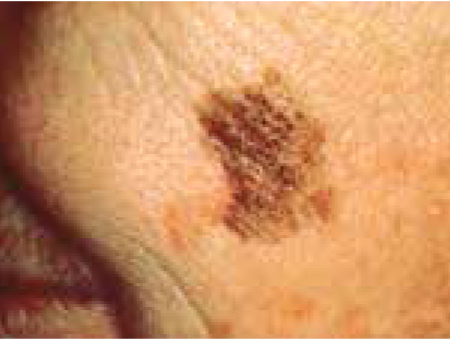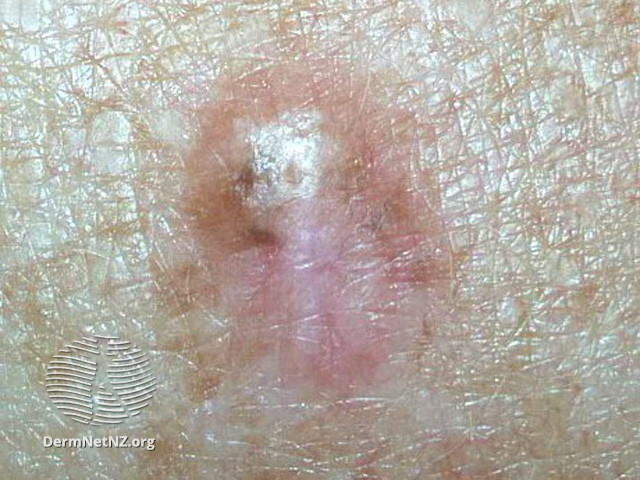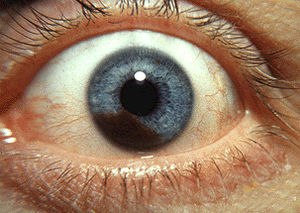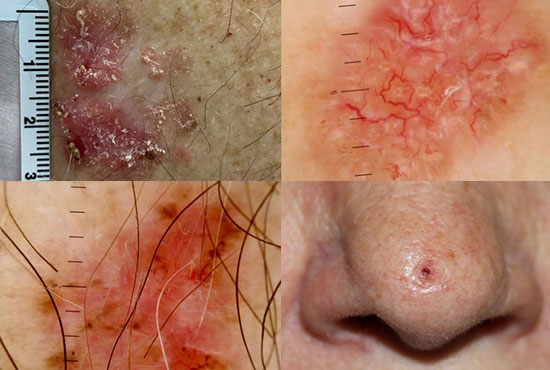TYPES OF MELANOMA
Melanoma is classified into different types. Classification is based on their colour, shape, location, and how they grow.

Superficial Spreading Melanoma
Superficial spreading melanoma usually looks like a dark brown or black stain spreading from an existing or a new mole. This type of melanoma is more commonly seen in areas of skin that have been exposed to UV light, especially areas of previous sunburn. It is the most common type, making up 70% of melanomas. Superficial spreading melanoma tends to follow the ABCDE rules. In most situations the early changes are purely visual ones and it is the later stages that may result in symptoms (itching or bleeding). In addition to the skin surfaces, melanoma can also present in mucosal surfaces such as the mouth or genital area.
Nodular Melanoma
Nodular melanoma is a firm, domed bump. It grows quickly down through the epidermis into the dermis. Once there, it can metastasize, or spread to other parts of the body. Nodular melanoma makes up about 10% of all melanomas. Nodular melanoma is typically dark brown or black, may crust or ulcerate. As in all sub-types of melanoma, nodular melanoma can present without any colour or a pink, red or skin toned colour (amelanotic), especially in people with very fair complexions.
Lentigo Maligna Melanoma
Lentigo maligna melanoma looks like a dark stain which may have looked initially like a large or irregular freckle. It has an uneven border and irregular colour. It is usually seen on the face or arms of middle aged and older people. It has a pattern of slow growth in the early stages when it is known as Lentigo Maligna.
Acral Lentiginous Melanoma (ALM)
Acral lentiginous melanoma can look like a dark spot or a bruise that does not get better. It can be found anywhere on the body. It can occur on the palms of the hands and soles of the feet. Acral lentiginous melanoma under a nail may look like a dark stripe. Like other flat forms of early melanoma.Learn More About Acral Lentiginous Melanoma
Subungual Melanoma (SM)
Subungual melanoma is a rare form that occurs under a nail and can affect the hands or the feet. It's more common in people with a darker skin pigment. The first indication of a subungual melanoma is usually a brown or black discoloration that's often mistaken for a bruise.Learn More About Subungual Melanoma
Desmoplastic Melanoma
Desmoplastic melanoma is a rare variant of melanoma, occurring on sun damaged skin, commonly in older individuals. It presents as a rounded or irregular slowly growing lump within the skin. It may be variable in colour and tends to be firm and scar-like. It may be mistaken for a cyst or keloid scar. Image provided by DermNet NZ
Uveal Melanoma
Uveal melanoma is a cancer (melanoma) of the eye involving the iris, ciliary body, or choroid (collectively referred to as the uvea). Tumors arise from the pigment cells (melanocytes) that reside within the uvea giving color to the eye. Learn More About Uveal MelanomaTYPES OF NON MELANOMA SKIN CANCER

Basal cell carcinoma
Basal cell carcinoma (BCC) is a cancer of the epidermis, which is the outermost layer of the skin. BCC usually presents as a pink or translucent nodule that typically appears on a sun-exposed area of skin, such as the face and neck. BCC is the most common type of skin cancer, making up about 75% of all non-melanoma skin cancers diagnosed. Learn More About BCC

Cutaneous Squamous Cell Carcinoma (cSCC)
cSCC is a common form of skin cancer that develops in squamous skin cells that make up the middle (dermis) and outer (epidermis) layers of the skin. The majority of cSCC develops as a result of long-term and prolonged exposure to the ultraviolet (UV) rays from the /find-a-dermatologistsun or from tanning beds or lamps. Learn More About cSCC
How to Detect Melanoma
When spotted early, melanoma has a cure rate of 85%. Learn to spot the ABCDE’s of melanoma.
Are You at Risk for Melanoma
Take a melanoma risk assessment
Free Melanoma Support
Melanoma Canada has a number of free services for patients, caregivers and healthcare professionals. Find Support